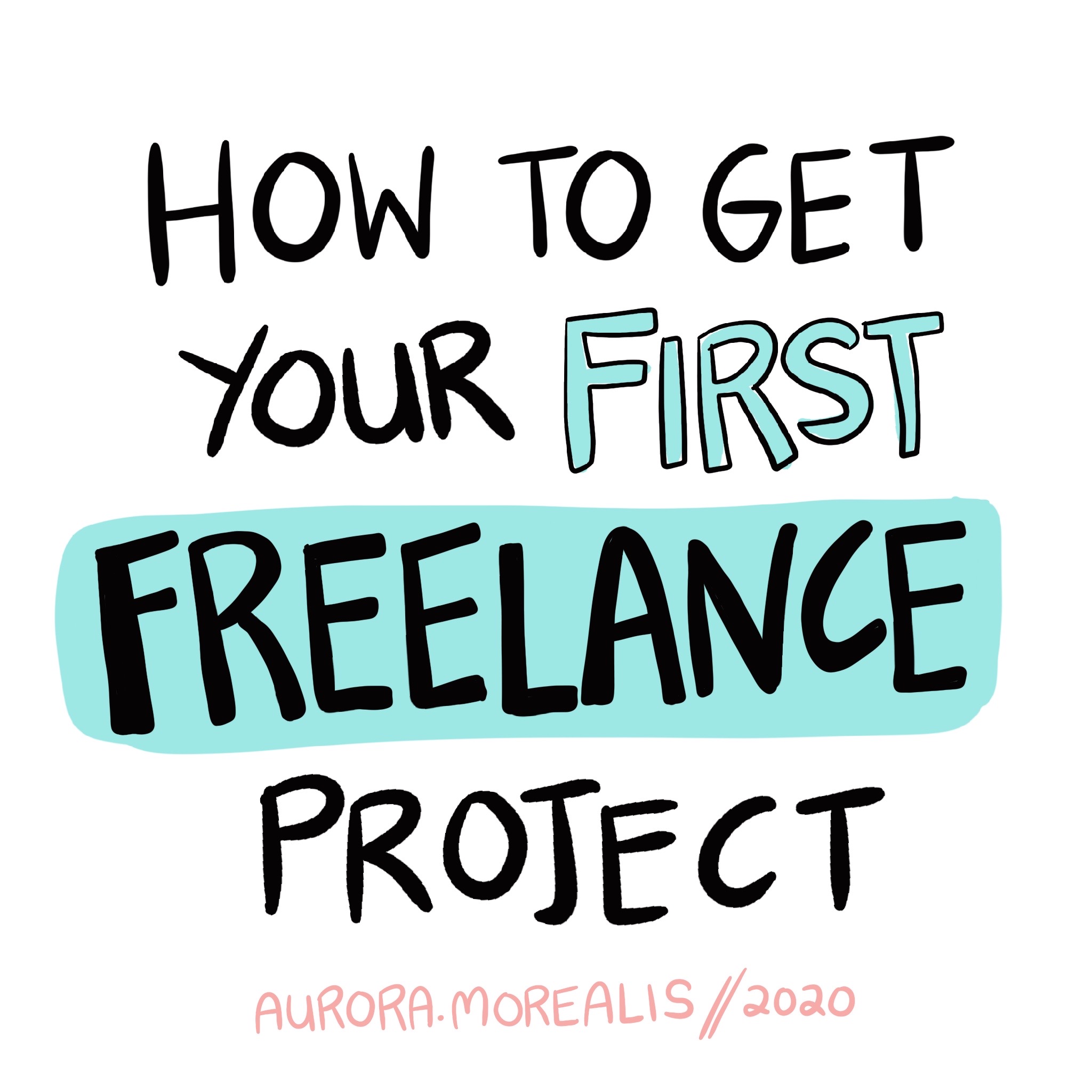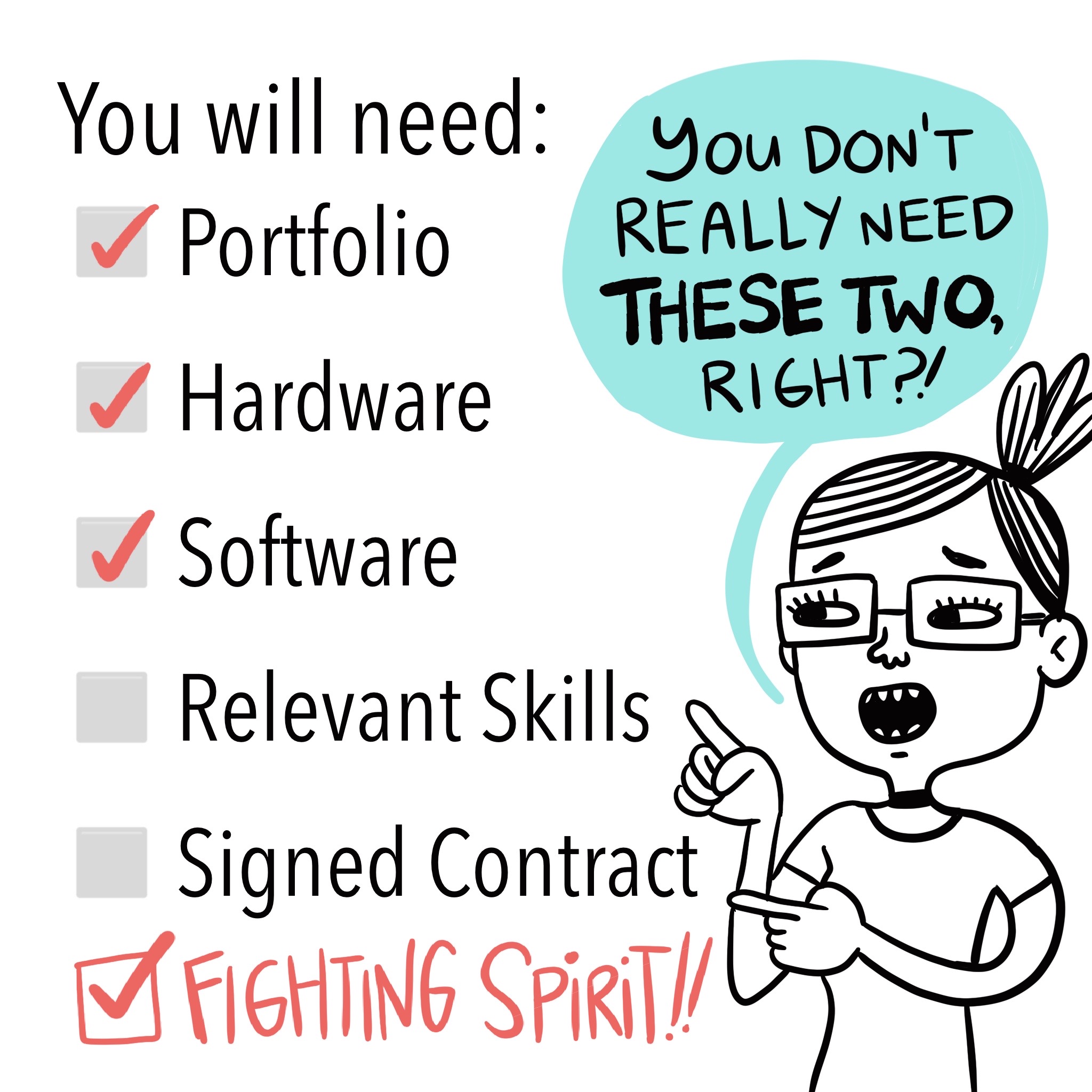1. Basic Portfolio: List of Services Offered and Sample Work
If you want to start offering creative services, you should at least have a list of services that you can offer. Ideally these services satisfy the economy, excellence and enjoyment parts of the equations.
For every service you offer, you will need at least 1 sample ready to show clients that will make them go “Wow! That’s amazing! I want one like that!” These could be projects for imaginary clients, brands you've made up yourself so you have project to practice on while you get familiar with the tools and skills you need to do the job. This project is just proof to the client to demonstrate that you can do the work.
You also need to know how much time it will take you to finish a similar project, so you can give the clients a decent timeline of deliverables.
A portfolio showcases your best work. Please, for the love of all that is good and holy, do not put up subpar work, just so that you’ll have something in your portfolio. Bad work won’t just get ignored, it will get YOU ignored.
If you’ve done work for actual clients but you’re not actually proud of it, don’t put it on your portfolio -- whether you get paid or not. I have so many projects I did purely for the money wouldn’t include in my portfolio. This is because not all clients have good taste (stay in the business long enough and you’ll find this out for yourself), but “the client is always right.”
Instead I would put the work that I’m actually proud of, even if they didn’t actually get approved by the client. In my contracts, I reserve the right to use non-final designs for my portfolio. I just replace any logos and remove any confidential information first.
One truly impressive piece of work in your portfolio will leave an impact.
A hundred mediocre works will just be forgotten.
If you want clients to call you for paying jobs, only show them your best stuff.
As a beginner, what can I consider as my "best work” if I'm not proud of my existing work yet, because I know I still have miles to go?
Your portfolio is the only reason anybody is going to hire you. If you’re already willing to talk to clients, there must be already a service you offer that you feel relatively comfortable offering, and a portfolio piece that proves that you are capable of offering that service.
If you’re not yet confident in your portfolio, consider showing it to an experienced professional in your field and ask them for an honest review. Then brace yourself. They may say that your current portfolio is actually good enough to get paying work, and hopefully offer some constructive critique to make it even better. Or (as a beginner, this is a real possibility) they may say that you still need more experience before your work is ready for freelance work. In that case, keep sharpening your skills by doing volunteer jobs or even by assisting a more experienced creative professional, until you get 2 or 3 portfolio pieces that you are confident in.
If you’re not yet confident in your portfolio, consider showing it to an experienced professional in your field and ask them for an honest review. Then brace yourself. They may say that your current portfolio is actually good enough to get paying work, and hopefully offer some constructive critique to make it even better. Or (as a beginner, this is a real possibility) they may say that you still need more experience before your work is ready for freelance work. In that case, keep sharpening your skills by doing volunteer jobs or even by assisting a more experienced creative professional, until you get 2 or 3 portfolio pieces that you are confident in.
2. Tools: Hardware and Software
For most creative work, you will need hardware (usually a computer) and specific software (applications). Sometimes all you need is a phone and an internet connection. Some creative services have more complicated technical requirements, such as a camera, rendering software, musical instruments, audio recording equipment, etc. You know best what you need.If you can’t afford to buy the gear yet, lots of cities have places that will let you rent the gear (cameras, lights, audio recorders, boom poles, etc.) This way, you get to practice with a lot of different tools and see which ones you like enough to save up for to buy for yourself.
Ideally, this is all original gear. In the developing world, it’s so easy to get pirated or “Class A Authentic Genuine” products. But there are a lot of risks involved in pirated software (and non-original hardware while we’re at it). So if you’re using any of those, please know the risks involved and brace yourself in case things go wrong.
You don’t need to use pirated software, there are lots of free open-source editing programs out there, just add the term “free open source” when you do an online search for software. There’s also a whole world of creative assets (audio samples, code snippets, vector and PSD , website templates, video loops) that let you use their library, as long as you give proper credit to the original source.
3. Marketing: How will clients find you?
In the beginning, you’ll be doing business mostly from word of mouth or through social media. All you really need is a business card and web presence.a. Business Card - If you’re in a creative field, you need a decent business card. If you’re not a designer, go to a free online design tool such as Canva or Adobe Spark (I’m not sponsored by them, but you can use them to make really good work easily and for free!) or ask a friend to make one for you. Have several ready in your wallet or in pocket at all times. You never know when you might meet a client!
b. Web presence - In this connected age, people need to be able to find you. Uncle Google needs to be able to point them to you, and so you need to make yourself easy to find. You might also consider making a profile on freelancing and crowdsourcing websites, especially if you’re a beginner.
Do I need to make a website?
Not really, unless you’re in the business of building websites or offering social media management stuff. For most creative services, just use what the people you want to reach are already on. It could be facebook, twitter, instagram, pinterest, etsy, etc.If your given name is common or already taken, Come up with an original business-related name and park your identity on all the usual social media places. Make your internet name easy to find and remember.
Back to our friend the wedding invitation designer, since she lives in Bangkok, she could make an account on all her community’s social media sites/apps with the name “Wedding Invitations Bangkok” - this makes her easily searchable. That way, if people are looking for wedding invitations in Bangkok, they’ll find her pages (hopefully she checks all of them regularly) even if they’ve heard of her personally.
So you’ve got a list of services and a portfolio. You’ve got the tools (hardware, software) you need for the job. You’ve also established your presence on social media, which will ripple through the internet and its search bots.
You’re now ready to go get some clients and some real work experience. Let’s go hunting!
Up Next: Read About How I Got My First Freelance Project







No comments